#irafic
Text
Had to get my MW3 agonies out with a fanned fiction. love loses.
canon compliant, major character death, general miseries.
summary:
Sergeant John MacTavish sustained five gunshot wounds to the torso prior to death. Perforating gunshot wound of the head confirmed as cause of death. Stippling on left temporal region indicates firing at close-range. Toxicity test showed no evidence of nerve agents in his bloodstream at time of death.
Traces of black coffee were found in his stomach, following full autopsy.
Ghost pauses, frowning. His fists clench the report, crinkling the little diagram. Johnny hated coffee.
In the aftermath of a tragedy, two ghosts exchange a promise.
22 notes
·
View notes
Text
Additional to the map before I go to bed: gods and their primary/secondary aspects--
God of agriculture and strength - Caranth
God of alchemy and ingenuity - Mayana
God of ambition and knowledge - Trian
God of creation and patience - Bylune
God of death and order - Morita
God of earth and glory - Trito
God of air and freedom - Gaduza
God of lightning and destruction - Rumala
God of ice and arts - Barali
God of water and purity - Lenthian
God of fire and rebirth - Irafiti
God of hope and secrets - Luciean
God of life and luck - Aurinae
God of sin and wealth - Denzen
Their primary aspect is what most people will end up following their faith for, the secondary is largely associated with the original soul that had the role of that god, which may or may not be upheld by the current incarnations.
11 notes
·
View notes
Text
irish forenames + scottish surnames + persian names BUT excluding "h"
Abbar Abbán Abdoos Adolm Afaqandein Afna Afsour Aidiardi Ainíles Airang Airzad Aledwis Alionnd Alisouz Allari Almán Alpes Ambyzurna Ameati Amirlani Amuin Anain Anak Anaracil Anoteatis Aoirz Aomacfrani Arbatarla Areiressan Armead Arta Artúr Asair Asang Asgalleb Asktasd Assi Assiaban Asstín Astazarya Atac Atin Atoudislán Avad Avena Averinn Ayavang Azadean Azin Azizadig Azus Bador Bambra Bammis Bandrum Bardi Bari Barvi Bazilip Beacculleb Beariogead Bijadar Blán Bounn Brain Breag Briar Brif Brisa Bríonán Buaraxisli Bystoona Bànaza Béad Bòis Cabna Cadzang Caidi Caine Cairiam Cait Caitas Caitroula Cali Caoir Caori Ceacgill Ceacin Ciand Ciles Cillera Coba Cobnam Coideasiar Colani Conaz Cong Cossa Cran Cria Cyri Dadeis Dail Dailiantes Dainn Dami Daolna Dares Dari Daris Daur Dees Dery Djanam Dolianes Donnes Dori Doud Draqiqi Dubar Dunais Dúna Eani Eari Ebabari Eidi Eini Einn Eity Elnaig Eosa Esfarypei Esmirlan Eóiri Fafari Fara Farasd Fari Farmain Fealagam Feemact Fieinnazus Finn Foos Fordi Frat Froos Fáilledani Féinnan Gaig Gart Gasa Geed Geriz Gillavi Givi Gled Gobsa Goin Goldan Golessan Golmóine Golìosa Goraq Graic Gres Gria Guebi Guiran Guny Gyga Hakestop Hakza Hames Hammainn Haqatayl Haqi Hasann Hati Hedwian Henealonn Hojazi Hoodandann Hoosa Houraxis Houzadi Hovi Hutainn Imacgili Imaclín Inne Iraf Iranestan Irasa Irdan Ires Ispour Iósada Jaberead Jaffar Jafig Jala Jali Jama Jambeis Jami Janaclaspa Javan Joosa Kami Karivan Kariz Karzademi Kasganaz Kaynt Koodig Korberz Kormedairz Korous Koull Lagan Laller Layvoo Leill Leyl Leòir Lilín Lonak Maca Macadan Macairami Macait Macat Macatrin Maccataid Maccnèin Maccolcill Maccuig Maceacna Maceacuirc Macear Macgi Macgillear Macgilpeis Macginn Macgiome Macgir Macgivi Macglacgil Macia Macie Macill Macillear Macilledi Macilleán Macillos Macilpeimi Macilís Macionnín Maciontán Macios Maciouq Macluin Maclùcant Macnaz Macni Macra Macri Macrian Macuidi Macumi Macutlín Macàin Madarda Madjiri Mailt Maini Mainn Mais Majeinna Majizus Majmi Maker Makimi Mameanage Mami Mand Mani Manispous Manndi Manus Maod Mara Maramin Marca Mardir Margoli Maria Mart Masbar Masean Masouzi Mastraoill Matan Mazi Maziani Mealaur Mega Megar Miran Miria Mirlamin Mirí Mitain Moadi Moani Moay Moayl Moayn Moayoo Moinn Mori Motullavin Moudnaon Mourcán Mouz Mozbei Muia Màrla Máirius Nadzan Namid Nasiarma Navarr Nazmaird Niki Nirzang Noosal Norsa Nouzi Odavi Oirtain Opeari Oxan Para Pargillein Peobaris Pirzani Poer Posroin Pourair Pourtazi Pous Pousse Prefteig Proin Psaev Pyrs Pyrsean Rabain Rabardi Rabiaravan Rader Raffri Rasiondr Rawan Razyas Reydonm Rezandi Romeari Rounlan Rour Roxan Ruar Rídeanis Róiri Rósa Róseagaidi Saban Sabari Sabazadi Sacdi Sadarit Safargais Sailila Saleali Samiyarnes Sanamace Sani Sata Sati Seacin Sean Seasa Seent Sganjbari Siaein Simetou Smaoli Solìm Sora Soroirad Sorry Soud Stain Stan Sumi Séagum Séalzan Séamyrafri Tabbán Tagoin Talan Taleac Tarvi Teilledzal Tiadei Tios Tomóid Touin Tous Téoda Ualleall Ualta Uare Valum Wattan Xandiann Yagariran Yagán Yarafy Youdani Youliogaig Youzemine Zaibi Zenaira Zialled Ziyen Zoys Árdi Éaddain Étas
0 notes
Text
whyyyyy is astronomical software always so user hostile for the love of god get a front end developer for your project
2 notes
·
View notes
Text
Iran - Iraq air war’s best aircraft
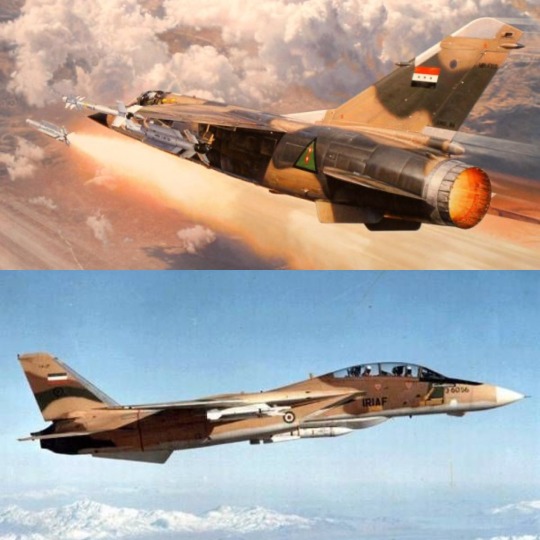
Iran’s F-14A Tomcat Vs Iraq’s Mirage F.1EQ
The Iran Iraq conflict in the air was a dangerous battlefield, and an interesting clash of different ideas on how air combat should be fought as Iranian and Iraqi aircrew were trained in very different ways but also a interesting clash of Soviet against American made aircraft and weapons. During the war one aircraft from each side stood out as the top tier fighters of their respective air forces which were:
the US-made Grumman F-14A Tomcat used by the IRIAF

By far the most powerful aircraft on the battlefield, the Tomcat was an advanced 4th generation fighter aircraft with an astonishing AN/AWG-9 weapon control system, powerful avionics and equipped with some superb weapons, most notably the Aim-54 long range missiles, and yet possess incredible manoeuvrability thanks to lessons learned from Vietnam despite its incredible size compared to other aircraft of the time. One of the most important reasons the Tomcats were so effective were the aircrews who had been trained in the US to top western standards, giving the pilots fantastic understanding of how to fight and react in the heat of combat and would go a long way when facing a enemy of much greater numbers. 80 aircraft had been ordered in 1974 and the first aircraft would be delivered in 1976 with a total of 79 aircraft in country by the time the revolution ended the contract. Apart from some small downgrades to a few of the avionics and the Phoenix missiles the aircraft were the most powerful fighters in the region at the time and remained effective even during the 80s.
The downsides to the IRIAF Tomcats were small numbers available at the start of the conflict (60 in 1981) and the numbers went down to about 20 aircraft due to combat losses and lack of available spares. The Tomcat was a highly sophisticated aircraft and needed complex parts and highly trained technicians to maintain, both were not really available to a cut-off Iran who had to rely on self-knowledge and the black market for parts. Also the US had kept the Iranians from understanding how the complicated avionics worked so when the US left, the Iranians had a hard time knowing how these parts could be fixed, only some time did they know how to fix these parts. And finally these Tomcats, being original A models were fitted with the troublesome Pratt & Witney TF30 engines and although they were the improved 414 model they still proved problematic, none other than 9 aircraft would be lost due to engine related issues, and each loss was painful as of course no replacement aircraft could be procured.
And on the Iraqi side there was the French-made Dassault Mirage F.1EQ-2
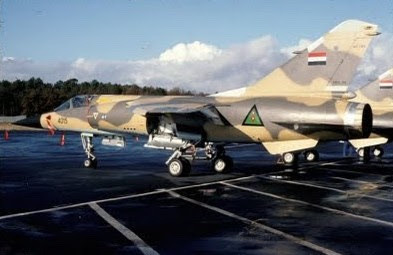
First ordered in 1977 and starting to arrive in Iraq in 1981 the Mirage F.1 was a big step up from the line of Soviet built aircraft used by the IrAF. Unlike the Soviet MiG 21 and 23 which were downgraded from Russian standards and were rather poorly equipped, the F.1 was very modern, brilliantly equipped and the aircraft could use a whole host of modern state of the art weapons and reconnaissance pods although for this comparison I’m focusing on the F.1EQ-2 interceptor variant. The EQ.2 used the Standard Thompson-CSF Cyrano IV Radar, a system capable of using three different modes and was compatible with what was arguably some of the best air-to-air weapons available such as the Mantra R550 Magic and the Super 530 missiles. The simple systems and the single engine made for a lightweight and easy aircraft to maintain and fly, and unlike the Iranians who were cut off, the Iraqis could acquire as many as it could afford and almost 100 were in the country by 1988/89. The aircraft certainly made its mark and gave the timid IrAF pilots a new level of confidence when facing more advanced Iranian aircraft.
The downsides to this aircraft were mainly the lack of availability, most of the fighting during the war was done with the older and far less capable MiGs and Sukhois already in inventory as delays in the development and production, meaning the F.1s would be slow to arrive and not in any substantial numbers until later on. Also Iraqi requests for a heavier payload capacity slowed down the deliveries of the aircraft. Also a big issue was Pilot training, unlike the Iranians who had been trained to high standards by the Americans, the Iraqis had been trained to rather sub-standard soviet doctrine built around the idea of a IADS system, but the pilots received very little air-combat training, and often had to learn its own methods or those of its Arab neighbours. Along with the new F.1s the French also trained the Pilots to much better standard, there were even air-combat courses made available by Dassult in France and a number of Iraqi pilots took these to acquire much needed skills and although some of these became brilliant pilots, they were too few in number and Iranian aircrews would always have an edge in terms of pilot capabilities compared to average Iraqi drivers.

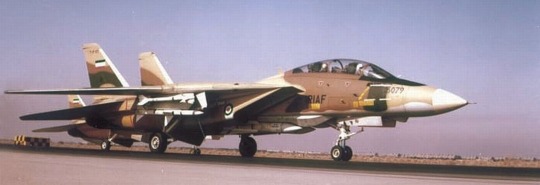
Overall the F-14As shot down an estimated 30 F.1EQs compared to about 6 Tomcats downed by the Mirages (the F-14s would end the war with a tally of 160-20 and the F.1EQs with 35-30). In my opinion the F-14A was the better aircraft in a number of ways. The main one being the Tomcat’s strongest trait: it’s AWG-9 weapon control system which possessed far greater range than the simple Thompson-CSF system in the F.1 and the AWG-9 was largely immune to jamming, even by some of the more powerful systems employed by the Soviets and Iraqis. With this the Tomcats could control the battlefield, choosing when to engage and the Tomcat could engage long before the Mirage thanks to its main weapon: the Aim-54A Phoenix with its long range capabilities could knock out Iraqi aircraft before they could even come close to weapon range themselves.
If the fighting got into visual range and into a true dogfight a number of factors would come into play, the F-14A posses fantastic low-speed agility especially at lower altitudes, but a Tomcat crew would have to be very careful of the notorious compressor stall issue with the TF30s but also the Mirage F.1s are a much smaller aircraft and use a single engine which is a good trait in combat but also have no worry about the stall issue. Pilot skill would play a big part here and the F-14s crew were still better in skill but F.1 pilots were better trained than previous MiG pilots so it would even the score and finally at this sort of range some good weapons are needed. The Mantra R530F Super was a far superior medium range missile to the older Aim-7E-4 Sparrow which hadn’t changed much since the 70s and for close range work both the Aim-9P and the Mantra 550 Magic Mk1/2 were relatively even in terms of capabilities.
Both air forces used different tactics to employ their aircraft effectively, the Iranians typically used the US combat spread technique and often engaged first with the large Phoenix missile and long range at about 50 miles and the poorly equipped Iraqi aircraft would often be shot down before they knew what hit them and fled the first chance they got. The Iraqis developed a combat method known as “Giraffing” in which aircraft would approach at very low level then climb under the Tomcats to pounce them from an unexpected angle and this resulted in a number of Tomcats shot down, 4 were shot down in a few days in November 1981 which gave a boost the the Iraqi pilots to take of the seemingly invincible F-14s.
And yet despite this the Iranian Tomcats remained the dominant fighter of the war, a combination of a fantastic aircraft and brilliantly trained aircrew put them ahead of the Iraqis even with the advanced F.1s, only the lack of aircraft and parts prevented them from ever fully establishing air superiority over the hostile skies of the conflict. The tomcats ended the war a clear winner but were low in numbers when the conflict ended whilst the Iraqi F.1s would earn a reputation as a effective multi-role aircraft, being used in the air interception role, ground attack role and anti-shipping role.
Today the IRIAF Tomcats soldier on, with an estimated 20-40 aircraft still in service
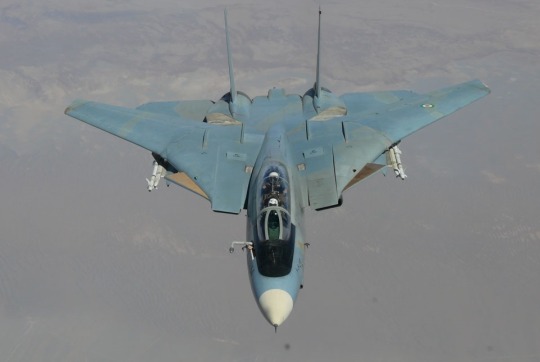
Whilst unfortunately the 1991 Gulf war and the 2003 invasion of Iraq led to the complete end to the IrAF with most of its Mirage F.1EQs destroyed or grounded due to lack of parts

Ironically a number of Iraqi F.1EQs fled to Iran before the start of the 1991 Gulf war and these were seized by the Iranians as compensation for the conflict they started. These still fly with the IRIAF alongside the very F-14s they once challenged.

#grumman f 14 tomcat#f14tomcat#f14atomcat#f14#f14a#grumman#dassault mirage f1#mirage f1#f1eq#fighter jet#fighter aircraft#air combat#aircraft comparison#iran#islamic republic of iran air force#iriaf#iraq#iraqi air force#iraf
58 notes
·
View notes
Photo
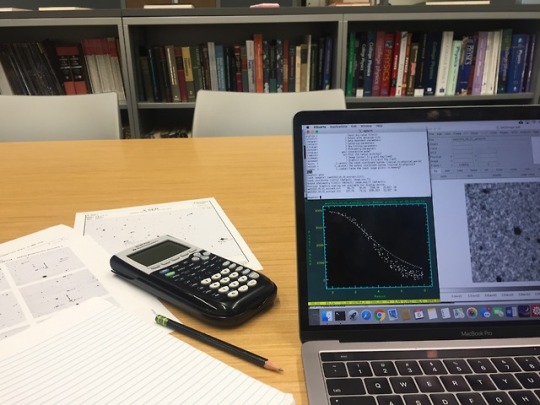
6.7.18
i want to never leave our new little physics library. it’s so cute and i love being surrounded by books. also, i’m really enjoying doing all this photometry for my research on classical novae.
#astrophysics#astronomy#stars#photometry#library#physics#iraf#novae#nova#research#science#math#calculation#notes#studying#study#study blog#studyblr#programming#stellar-kinematics
27 notes
·
View notes
Text

to summarise how my week was..
#astronomy#astrophysics#iraf#uni life#college life#life of a grad student#grad school#personal#i hate iraf so much#uugh
1 note
·
View note
Photo

still doing data reduction for instrumentation...
data reduction forever!!!!!!!
2 notes
·
View notes
Text
Programas para el procesamiento de imágenes astronómicas
Desde que el inicio de la observación con telescopios se dibujaban los objetos que se observaban, con el avance tecnológico llegaron las cámaras fotográficas y en la época moderna los soportes electrónicos que capturan la luz de los objetos astronómicos.
Con estos instrumentos obtenemos la luz de los objetos, sus fotones, estos nos dan una información que debemos plasmar en una imagen o en…
View On WordPress
1 note
·
View note
Text
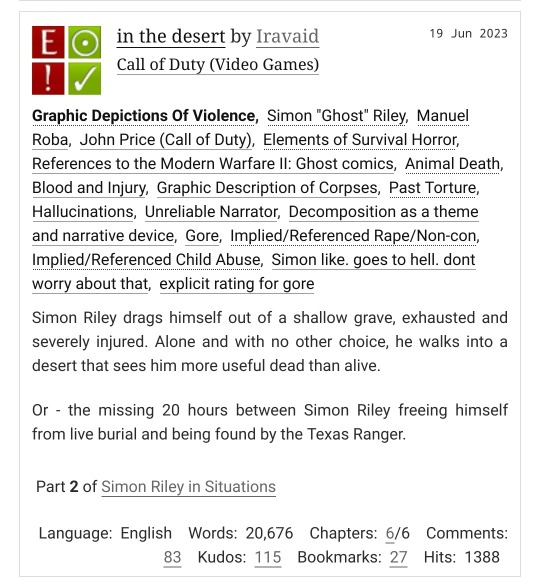
I am back in the building writing CoD of Duty, this time with Simon stuck in the desert after freeing himself in the comics, link below! By god, heed the warnings
20 notes
·
View notes
Text

Work in progress 🌌
I’m using a software called iraf to analyse data from the telescope to calculate the mass of a galaxy. Before starting you need to calibrate ccd, BIAS, etc..
Therefore, that orange image is the average of two images, and we need to understand (in average) what is the contribution from the sky that must be subtracted from the complete image.
#new studyblr#physics student#studyblr#astronomy#university#study blog#physics studyblr#physics#mass of a galaxy#study#astronomy laboratory#linux#coding#telescope
29 notes
·
View notes
Text
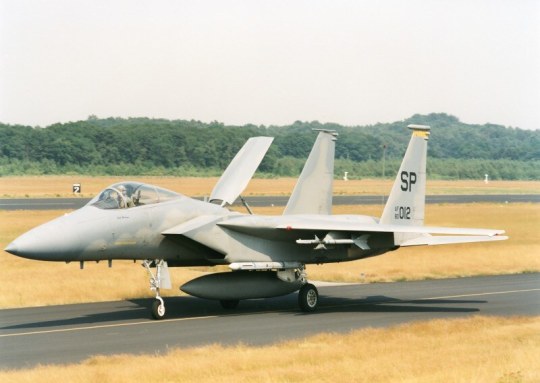
McDonnell F-15C 80-0012 36FW 525FS flown by Capt Mark McKenzie destroyed IrAF Mi-8 with AIM-7M 11Feb91
7 notes
·
View notes
Text
9/12/20: 5/100 Days of Productivity
Today I:
Read some psych
Organized leisure-related things on Notion
Realized being a STEM major with a windows (read: not Linux) operating system is not ideal after looking into installing IRAF and DS9 on my computer, and also decided that installing LaTeX looked more complicated than I wanted to deal with at the moment
Definitely, very much not as productive as I wanted today to be.... But I guess it was a Saturday, there are worse days on which to be less productive..
No picture again today, because it would’ve just been another very similar picture of my psych book. So have this astronomy thing. Also, tag challenge coming tomorrow (9/13)?

#haha this one's not going anywhere near the studyblr tag#student#university#indiana university#IU#astrophysics#astronomy#physics#highenergyuniverse#high-energy-universe#asher-studies#asher studies
4 notes
·
View notes
Text
4 notes
·
View notes
Text
AIM-54 Phoenix in Iran
For me one of the most incredible fighter aircraft to be built and put into service was the Grumman F-14 Tomcat

However what made the aircraft one of the most potent fighters was its weapon control system linked with its powerful AN/AWG-9 radar, a system capable of tracking 24 targets and guiding 6 missiles to 6 of these threats almost 100 miles away. To give the Tomcat it’s long claws an incredible weapon was introduced that gave the Tomcat its legendary status: the Hughes AIM-54 Phoenix long-range Air-to-air missile.
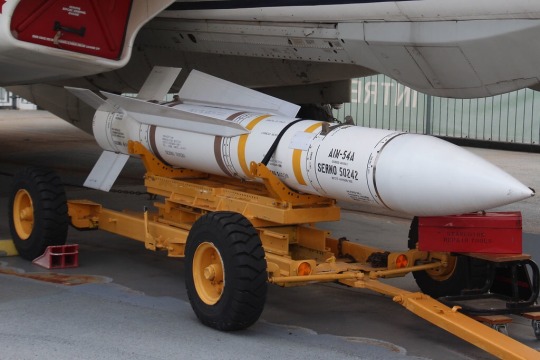
With a range of almost 100 miles, semi-active and active radar features and the ability to home on aircraft attempting to deflect the weapon via ECMs and also proved impossible to jam it was one of the most state of the art aircraft weapons introduced at the time in the 1970s. However due to its size, complexity and need for a powerful radar to fully utilise the weapon it was only used on the F-14, which means only countries who bought the Tomcat could use this missile which came down to two nations: the US and Iran.

With Iran’s decision to acquire the F-14A came contract “Persian King” being signed in 1974. As well as 80 aircraft, training and spare parts and engines for 10 years, the contract also called for a total of 714 operational AIM-54A Phoenix missiles to be built and delivered to Iran. Whilst the Phoenix missiles built for Iran were slightly downgraded electronically to ensure it was less effective against US aircraft and their ECMs the weapon was just as potent as its US counterpart.
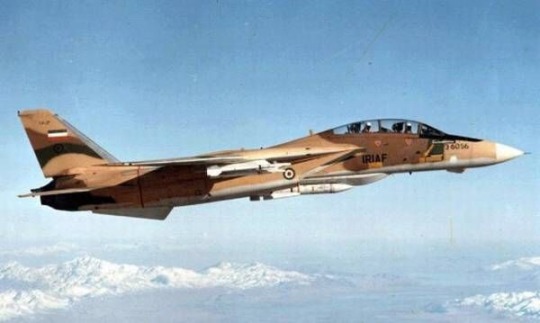
However in 1979 and Islamic Revolution swept through Iran and with it the US Friendly Shah, this along with the Hostage crisis at the US embassy shortly after led to the US turning its back on its former ally and most Shah friendly personnel fleeing the country for fear of torture at the hands of the new Islamic Government.
With the departure of Grumman and US Navy technicians from Iran and rumours that both the F-14As and the AIM-54As had all been sabotaged and made non-operational by the leaving personal it was assumed the Iranian crews now in charge would be unable to fix the aircraft and wepons, the US hoping the highly advanced F-14s would be non-operational in the hands of the new and strongly anti-western Iranian Reigeme as these could now represent a clear threat to others in the Gulf. The imprisonment and even executions of those trained on the aircraft and the weapons seemed to ensure this was the case.

However in July of 1980 tensions and border clashes with Iran’s neighbor Iraq led to commanders of the new IRIAF to begin the process to get a number of F-14s back to operational status. A number of the damaged Phoenix missiles from attempts of Sabotage were also repaired and brought back to operational service.
On the 13th of September 1980 a border intrusion by an Iraqi MiG-23MS led to a historic moment for the Tomcat: The MiG was shot down by a single AIM-54A, the first kill with the mighty Phoenix. With the War with Iraq breaking out on the 22nd September 1980 a large number of imprisoned pilots and ground crew were slowly released from jail and were sent back to their units and by 1981 a rather astonishing 60 Tomcats were now operational, an incredible feat for the now cut-off nation without any outside support.

With more and more engagements came much needed combat experience and lessons were learned by the Iranians on how to use the Tomcat and how to employ the AIM-54A in combat. One of the more noticeable examples was the standard load reduced from the usual 4 Phoenix missiles from the start of the war to just 2.

This was done for a number of reasons. First was because there were only 224 rounds in country after the supply was cut off by the revolution so these rounds had to be used sparingly.
Second was the weight of 4 missiles reduced the Tomcat’s ability to dogfight, therefore the reduction of just 2 AIM-54As under the forward Pallets ensured if an opportunity to use the weapons were missed and the Tomcat was forced into a close in fight it still retained its superior manovering ability as the missiles mouted under the forward fuselage had no effect on the F-14s aerodynamics.
And lastly the Phoenix provided another useful trait for an outnumbered Air Force: Fear. Due to Iraqi pilots being trained to a much lower standard compared to the American-trained Iranian aircrews and their Soviet-made aircraft being fitted with poor RWR equipment led to a number of aircraft being shot down before the formation knew what hit them, which meant all it took was one Iraqi aircraft to be shot down to turn an entire mission formation around and abandon mission. Iraqi pilots often ran when the presence of an F-14 was known, as well as known hunting grounds were avoided at all costs by both Iraqi and Saudi pilots knowing the terrifying capabilities of the Tomcat and the Phoenix.
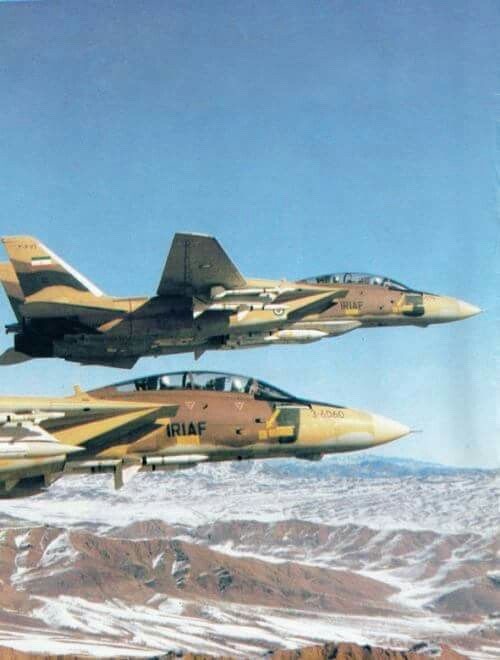
With the advantages of the F-14 clear over anything the IrAF had in its inventory the Tomcat crews used the aircraft and the Phoenix to its full advantage, often using utilising the Phoenix at long range and the big warhead proved deadly, sometimes downing more than one aircraft with the detonation, such as in December of 1980 when a single AIM-54 downed 2 MiG-23s and in January the following year a Phoenix downed 3 MiG-23s, with the 4th aircraft damaged, proving that 2 missiles were plenty for a typical mission as the fear of more attacks would drive most formations home.
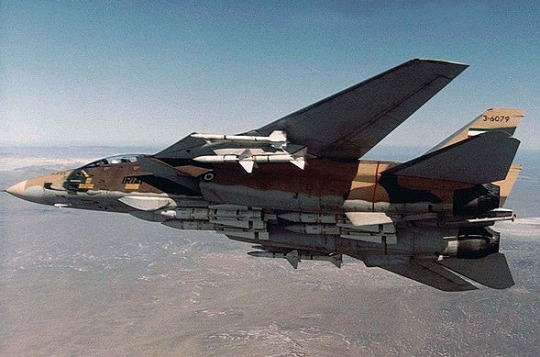
However by 1985 the stocks of operational AIM-54As were starting to be depleted. A combination of 5 years of hard war and the Phoenix missile’s components going past their shelf life as missiles need update kits to keep them in operational condition, especially a complex weapon like the Phoenix which has many sensitive and sophisticated parts to work and many of these became inoperable. This led to a experimental series of tests called “project SkyHawk” to see if the MiM-23 Surface-to-Air missile could work as a aircraft weapon, these tests proved ineffective and the stock of Phoenix missiles were boosted by other means like the Iran-contra affair in which a number of upgrade kits were provided to Iran by the US and a fair number of missiles were brought back to frontline status.
The Phoenix proved to be an incredibly effective weapon against every aircraft in the Iraqi Air Force, even against the most advanced aircraft like the Mirage F.1, MiG-25 and the Tupolev Tu-22B which possessed good RWRs and ECMs. By the end of the war in mid-1988 the Phoenix missile had been responsible for the 40 out of the estimated 160 aircraft shot down during the war, the missile proving incredibly effective and contributed to why in my opinion the F-14 was by far the most effective aircraft in the Iran-Iraq war. Despite depleting numbers of both Tomcats and it’s AIM-54s they still proved superior in the engagements it took part in.
Interesting how Iran showed the effectiveness of the AIM-54 in combat unlike the US who introduced the weapon as the US Navy have only had limited opportunities to use the weapon such as the Gulf war of 1991 where in a number of possible uses of the Phoenix the weapon didn’t work or the permission to fire was not granted due to fears of friendly fire. Only one kill was almost scored in 1999 by a US Phoenix in Iraq but the missile just missed by a few feet.
Today the original AIM-54 May still be in service with the IRIAF although it’s been very rarely seen on the 20-50 Tomcats estimated to be in service. With advancements in the aircraft Industry the Iranians have began a effort to arm its F-14s with modern domestic versions of the old US-made weapons originally supplied back in the 70s, most notably is the Fakour-90, a copy of the Phoenix which will be the new Long-range armament of the Tomcat in the coming years, coupled with the upgraded F-14A-M this could provide a suitable fighter/Interceptor for years to come although given this is Iran we are talking about it could be a poor attempt at modernisation and these could just be false.
But whatever the case the Iranian use of the AIM-54 during the Iran-Iraq proved beyond doubt the huge and complex AIM-54 combined with the AN/AWG-9 was an astonishing weapon system.
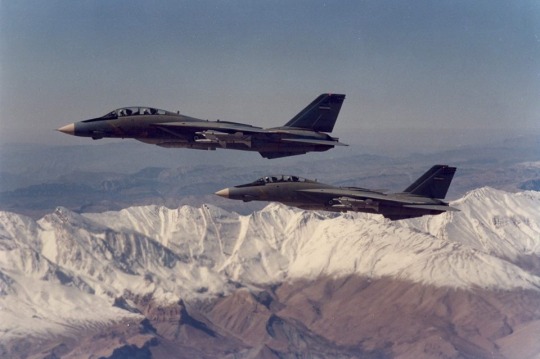
#grumman f 14 tomcat#f14atomcat#f14tomcat#f14#f14a#Tomcat#iriaf#islamic republic of iran air force#iran#iranian airspace#aim 54#phoenix#aim 54 phoenix#military aviation#fighter jet
8 notes
·
View notes
Text
today at work i learned from a coworker that, during my interview, i had solved my supervisor’s programming test shockingly quickly. i’m not sure what to do with that information. in my head i’d been panicking and sweating, and feeling sharp and dizzy, and i thought i was freezing up and going awkwardly slowly. but apparently it was fast enough and mistake-less enough that not only did it impress them, they also talked about it with other employees?
anyway today i started learning how to program in git. it’s really similar to iraf, which i used in my astronomy program in undergrad, so i actually just kind of... picked it up right away. i’m nervous that i’m going through the training packet too fast... i don’t want to jack up their expectations by looking like some kind of genius right off the bat. maybe i’m underselling myself, but i genuinely don’t remember a lot of this stuff until something reminds me. a huge chunk of my skill set sits behind a wall like that. they asked me to solve a matlab program in my interview and i genuinely thought i had forgotten everything and was just working off general things i knew about computers. i didn’t remember the syntax at all, i know that for sure.
i kept an eye on my coworkers to see what kinds of breaks they were taking. the guy at the desk next to me had his phone out and was scrolling through facebook while he programmed on his work computer so i felt a million times better about dicking around on discord while i waited for things to load, or waited for my boss to get back to give me my next task.
afterward i hoofed it over to creative writing club. i left a little early, i cut into my lunch break to make sure i was still putting in 8 hours. gotta be on my best behavior until i’m done with training, and then i can see about relaxing with the “exactly 8 hours” thing. i need the money anyway, a hundred dollars a day is super helpful but only doing it for 5 days isn’t going to cover everything i need to pay by the end of the month.
going to bed at 10 is miserable though. i’ve barely slept the last two days.
anyway, writing club! i gave some feedback on another story, and worked on the comic i’m going to stream tomorrow, and chatted with the other club members about the steven universe movie afterward. it looks like all of us have a lot of ongoing projects that will need feedback in stages this semester, so it looks like the three leaders aren’t going to bother with the collaborative world this semester. we’ve all got too many other things to bring to the table haha. cristian wants me to show some of my comic next week though. i might pick the halloween story, people seem to really like that one and i am the happiest with it i think. and it’s the easiest to establish context for and still mostly get the emotions across. if i read out the fishing story, it wouldn’t have the same effect at all if you didn’t already care about the characters.
it’s nice to not have homework but god 10-6 is NOT my ideal sleeping period. my body handles 11:30-7:30 so much better. i kind of hate it. i’m a little too tired to work on the comic tonight, but i did work on a comic at club, and i also went to club haha so i was out of the house for nearly 12 entire hours. i could pull up my job training and keep going but i keep reminding myself “like hell they’re not paying me to learn git! you HAVE to only do that during business hours.” haha. we’ll see how much energy i have tomorrow. i’ve got to run my regular errands and stream and stuff. i’m already dragging my feet and it’s only 9:45 though. at least the bike ride to and from the office has been helpful... the exercise is so much better than riding the bus or anything like that.
1 note
·
View note